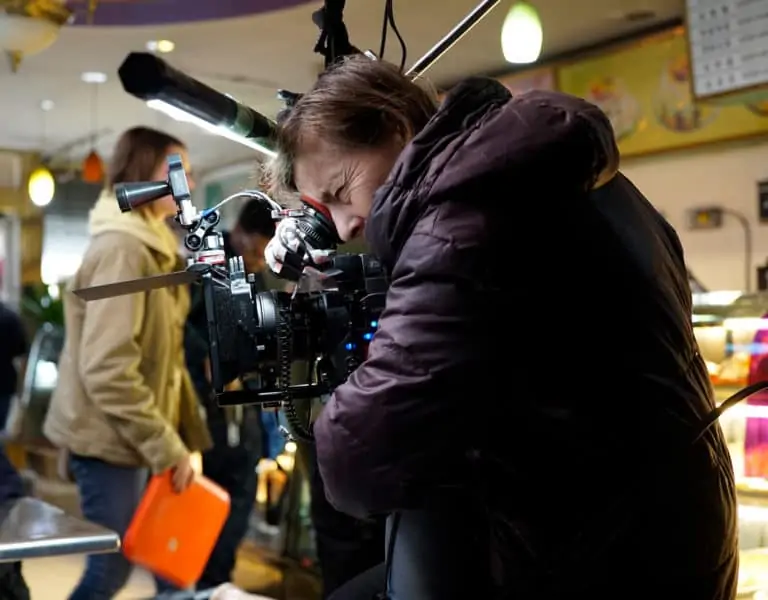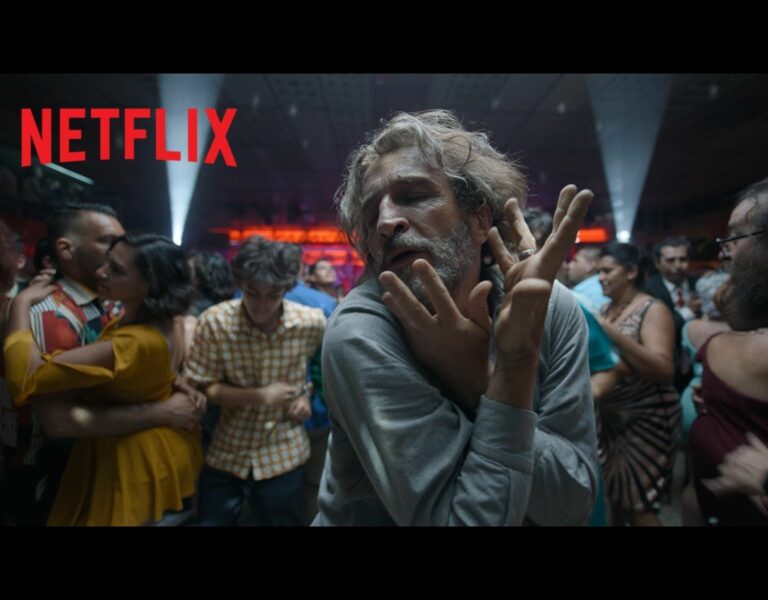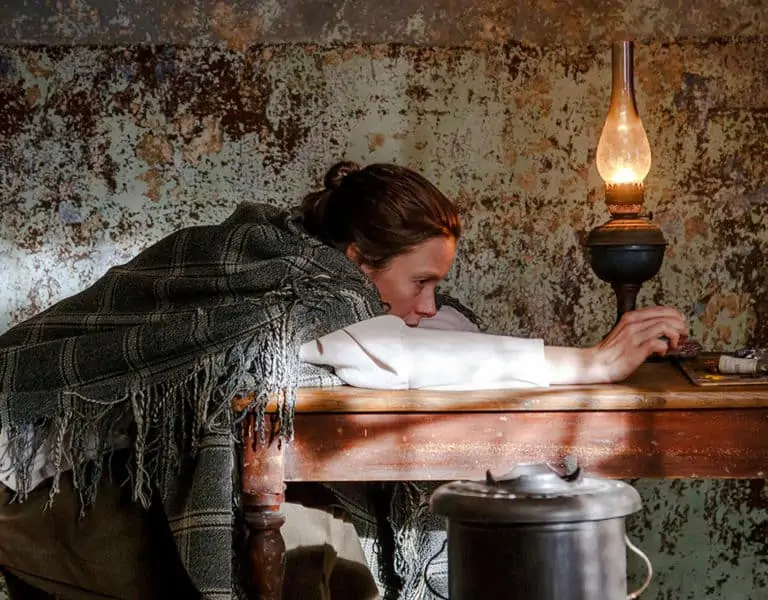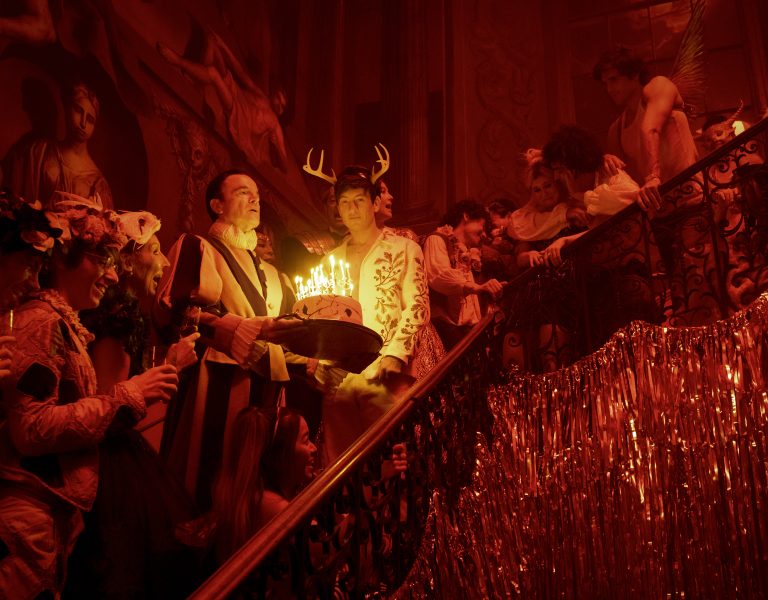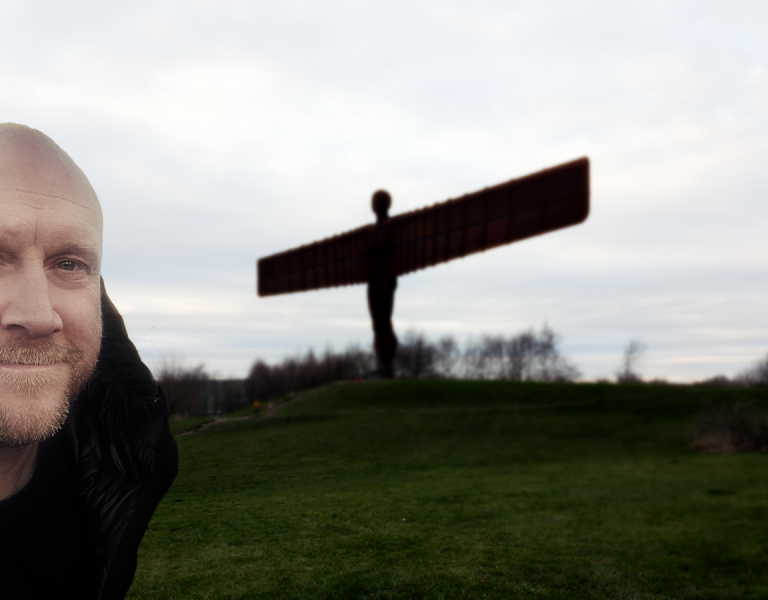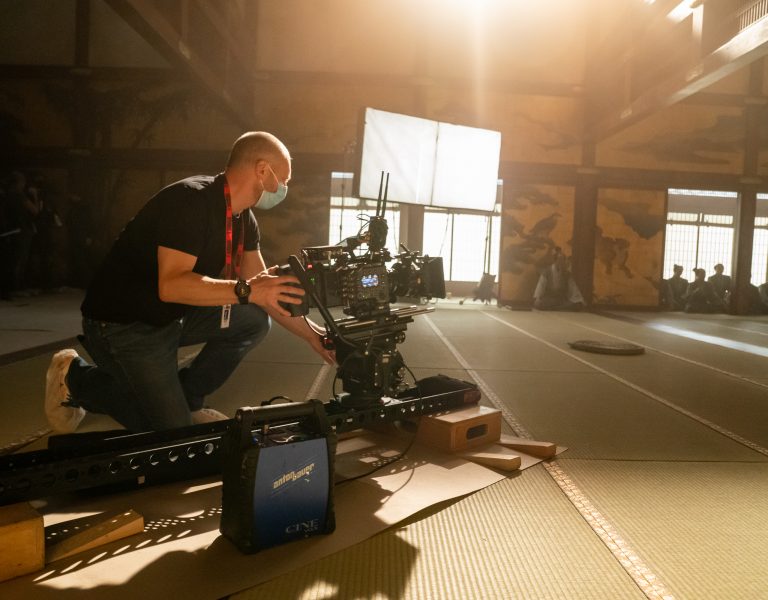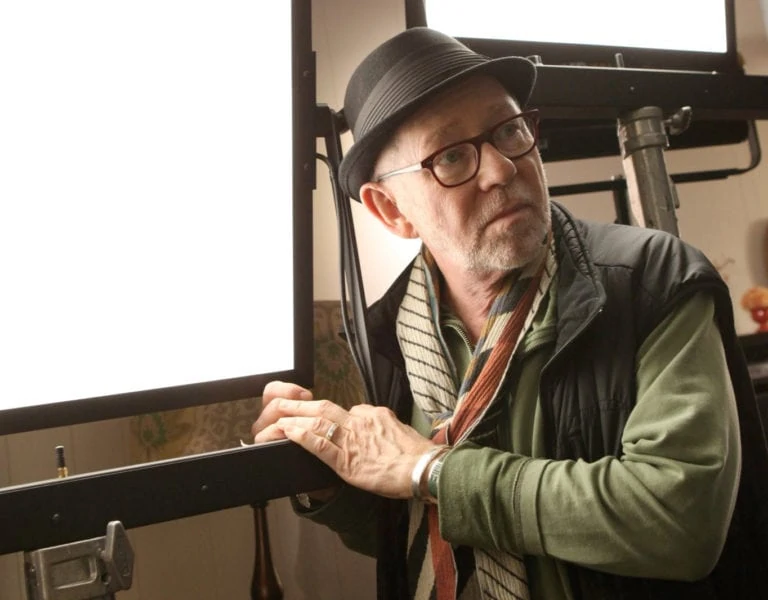TOMB RAIDERS
Filming amidst the northern Italian countryside’s starkly contrasting seasons, winter and summer, presents certain challenges. Cinematographer Hélène Louvart AFC sheds light on the techniques employed to evoke both the desolate and optimistic tones within the narrative landscape of La Chimera.
Alfred Hitchcock was famously known for his strict no-late-admission policy to his films. In other words, once the movie started, staff was under strict instructions not to allow latecomers to enter the cinema. This was his way of ensuring that the audience was gripped from the outset and experienced the movie in its entirety without disruption.
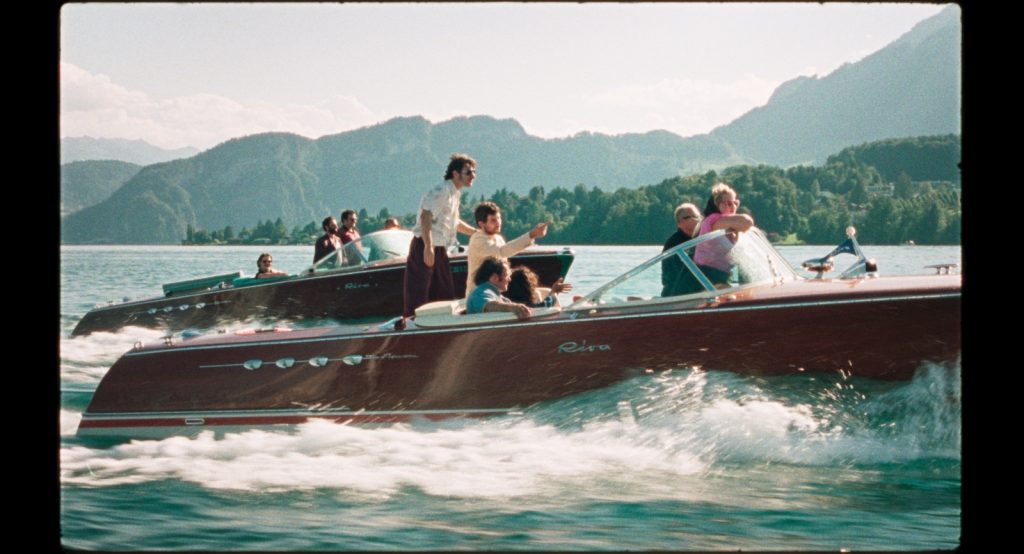
There’s something Hitchcock-esque that permeates the opening scenes of La Chimera. A stranger embarks on a train journey through the picturesque Italian countryside and wearing a rumpled cream suit, he captivates the attention of young females and the dog sharing his compartment. The viewer is drawn in from the start.
He is the protagonist, Arthur (played by Josh O’Connor), a British archaeologist recently liberated from prison. Returning to a quaint Tuscan town, he finds himself drawn into a web of international intrigue involving stolen Etruscan artefacts. The elusive Chimera becomes a symbol of redemption and easy wealth for a band of tomb raiders.

A Curzon, Rai Cinema and Canal+ production, the retro look and vibe continues beyond the opening sequences, extending throughout the film. Set in the 1980s, it’s characterised by period-appropriate clothing, hairstyles, and cars. However, this was done purely using things from that period and not the camera and lenses used on the shoot, according to cinematographer Hélène Louvart AFC (Never Rarely Sometimes Always, The Invisible Life of Eurídice Gusmão).
“I mostly used Zeiss 35mm Ultra Primes, which are designed to give a more normal [look],” she says. “Those lenses are also very good for focus in super 16mm. We mixed 35mm (ARRI LT 3-Perf) and Super 16 (Arriflex 416) and a 16mm Bolex camera. We also used ARRI Alura Zooms (15.5-45mm and 45-250mm).”

The film sees Louvart reunited once more with director Alice Rohrwacher, with whom she has had “a longstanding partnership”. Their previous collaborations include Corpo Celeste (2010), The Wonders (2014), Happy as Lazzaro (2018), Les Pupilles (2021) and two episodes of the coming-of-age drama L’Amica Geniale for Rai 1 and HBO.
La Chimera was a 10-week shoot, which took place in and around where the director lives in Umbria and Lazio.
“When Alice and I shoot together, we try something different each time,” Louvart says. “And for the light’s concept, our starting point is the natural light and then we increase (or not) the sun coming through the windows. We also keep the feeling of the darkness inside, mostly when it’s for winter scenes. And I used 18KW or 9KW through the windows, and then I compensate the contrast inside mostly with LED projectors.”

However, there were challenges ahead. One of the film’s main locations, Flora’s house, was a decrepit building, with old and fragile ceilings. Louvart had to use some LEDs (Carpetlight) for both the winter and the summer scenes.
“I appreciate the LED inside,” she adds. “It’s so great you can easily control the intensity with an iPad.”
The shoot was split into two blocks of five weeks each in starkly contrasting seasons – winter and summer. For the script, the two seasons’ aspects were essential. “It’s not just about seeing the difference in the wardrobe of course, but also in the landscape, the trees, the grass and the colours,” Louvart adds. “It’s about the entire picture.”
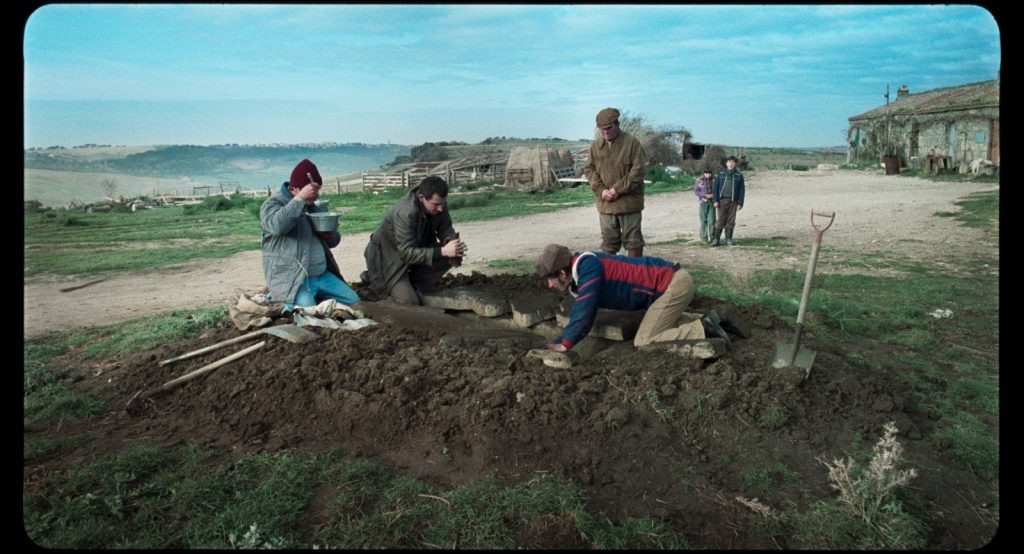
During the winter, Louvart and her team used some cover sets, in case the weather was too bad for shooting outside. “For example, Flora’s house became our main cover set,” she says. “For the winter, I only used 500T, and during the summer, I mixed 250D and 500T, keeping the 35mm for the nights. The super 16mm was mostly for the daily life aspect, whilst the 35mm was linked with the Etruscan spirit. The summer, in contrast, posed far less of a challenge. There was nowhere near as much wind and rain to contend with.”
Shooting underground and in a cave presented Louvart with her biggest learning curve, necessitating the help of some of the cast. “They held hand lights, which helped make the action more visible,” she says. “The light and the mise-en-scène were totally linked at this point – this made the moment lively.”

Later, when Arthur is alone, holding a candle, things became a bit more challenging for the camera crew.
“Josh (O’Connor) was supposed to be very close to the candle to keep his face visible, but when he moved it away from his face, he was totally in the dark,” Louvart adds. “So of course we used some LED, bounced on the ceiling, to bring down the contrast. And Josh was very aware of his gesture with the candle in his hands, which helped me a lot.”

